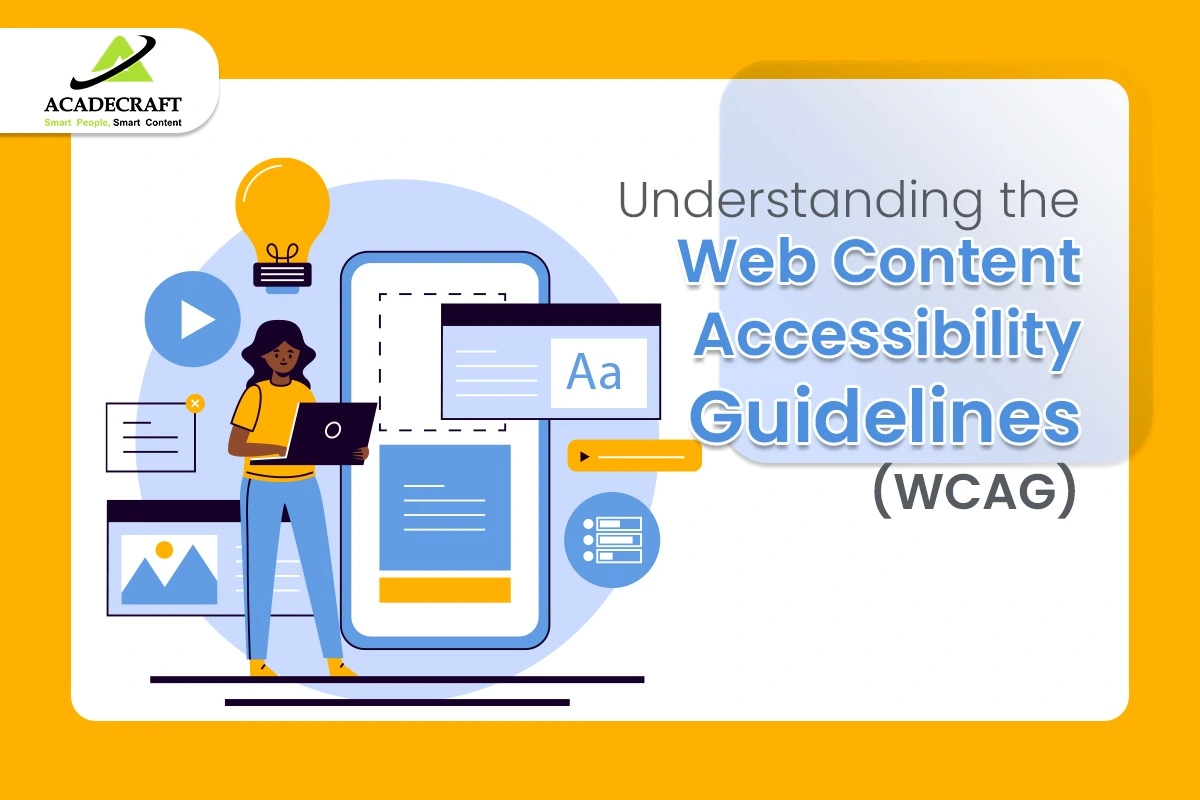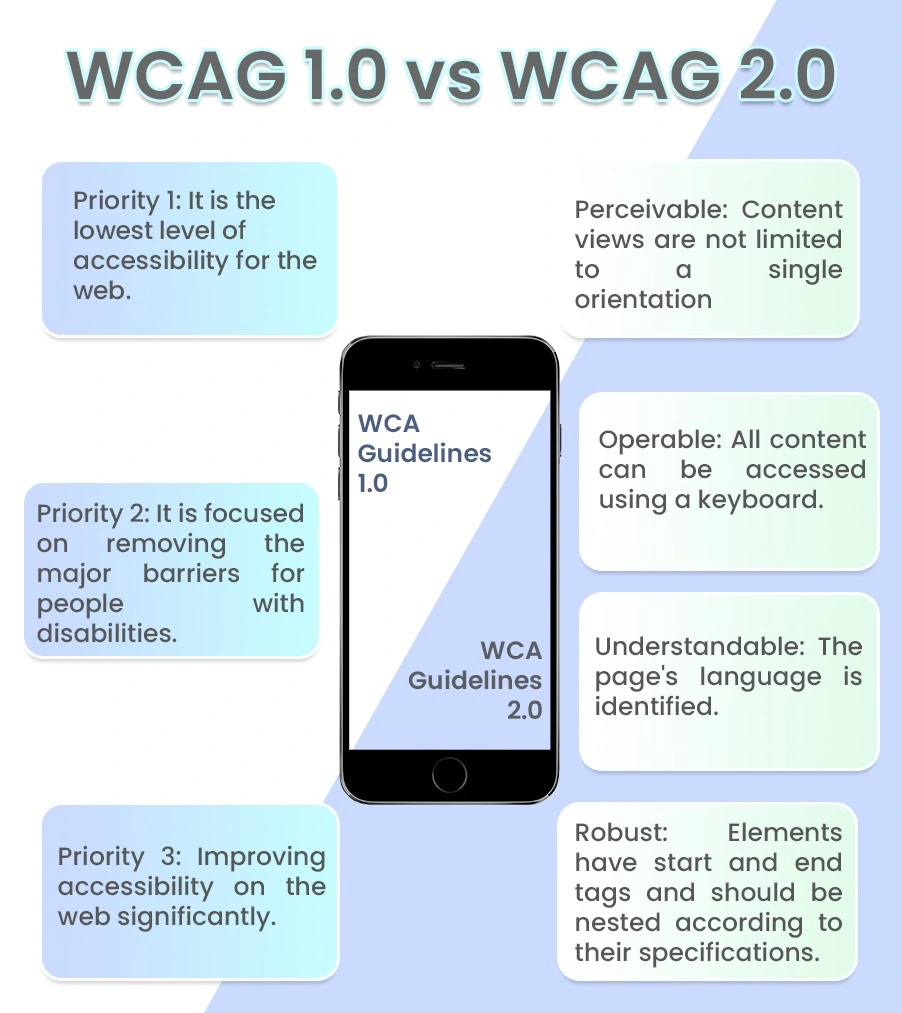
The Web Content Accessibility Guidelines, often abbreviated as WCAG, are a series of guidelines made available to improve accessibility. The guidelines are issued by the WAI (Web Accessibility Initiative) of the W3C (World Wide Web Consortium), the main ISO (International Standards Organization) for the internet.
As per the data published by the Bureau of Internet Accessibility, WCAG recommends that most websites undergo a basic web accessibility audit every 4-6 months. With frequent testing, websites can stay secure and compliant with the most current standards of accessibility set by WCAG, providing confidence to customers and visitors.
The guidelines are created to make web content more accessible to people with disabilities, including those with visual, auditory, physical, speech, cognitive, and neurological disabilities. The guidelines cover various topics, from web page design to text and images, to multimedia, to software and tools.
By following the guidelines, web creators and developers can ensure their content is accessible and usable for all, regardless of disability.
The WCAG 1.0 was designed to help web developers create functional sites for people with disabilities. It focused primarily on ensuring web content could be accessed by people with visual or auditory impairments. WCAG 2.0 expands on these guidelines by ensuring all users can access web content, regardless of impairments.

A substantial advancement in web accessibility was made in 1999 with the release of the W3C's first iteration of WCAG, which collected years' worth of practical work by developers around the globe.
The WCA Guidelines 1.0 included 14 guidelines that were divided into three priority levels:
The current rules have been in effect since 2008 and will continue for a long time. The guidelines can be used longer since they are highly technologically neutral than WCAG 1.0.
By relying on WCAG 2.0 principles rather than advanced technologies, the W3C created an ethical statement and useful guidance.
WCA Guidelines 2.0's directive principles are:
"A good website is a POUR website!" (That joke is funnier on a screen reader.)
The brilliance of a pragmatic approach like POUR focuses on understanding the users. If the purpose of these rules is not understood, learning them all is useless.
Users must be able to access the information using one of their senses. In other words, the information presented must be understandable to the user. Not all senses can be shut out.
Here are some examples:
It is considered operable if the users can easily navigate through the website. Getting users to interact with the site should not be impossible. The user must be capable of interacting with the page's components, like its navigation features and the user interface.
For instance, people who cannot use a mouse should be able to effectively navigate the site using the keyboard or voice control features.
The site includes:
Creating an understandable website is completely different from the above two mentioned principles. If the users cannot understand the website they are scrolling through, it does not matter if it can be seen and used.
The website must clarify complex topics in simple language and with clear terminology. By avoiding strange, unexpected, or inconsistent functions, the website must also be designed to ensure that users can easily understand how it works.
The understandable principle indicates that users must understand the information and how to operate within the website's user interface.
A robust website can be used by third-party technology (like screen readers and web browsers). The website must meet the recognized measures, such as using clean HTML and CSS. Doing so will minimize the risks to the users depending upon technology that cannot accurately process the website.
The website should also be tested to ensure it works across multiple platforms and browsers and can be easily accessed by people with disabilities. WCAG 2.0 audit should be done regularly to ensure the website remains accessible.
Keeping up with the Web Content Accessibility Guidelines is important to ensure that websites are accessible to as many people as possible. Testing the different levels of conformance (A, AA, AAA) will ensure that the website is usable by people with disabilities which can be done with the help of website accessibility services provider.
Level A is the absolute minimum and is frequently regarded as unacceptable. Most website owners aim for AA compliance.
Often these legal requirements are also judged using the AA standard. Level AAA is the highest conformance level and cannot be achieved for some content.
Keeping up with the Web Content Accessibility Guidelines (WCAG) ensures that users of all backgrounds and abilities can properly use the website and access its content. It also helps identify potential website issues so they can be addressed quickly. Regular testing ensures the website remains accessible and up-to-date with the latest technological changes which can be assured with the help of accessibility testing services.
References:
Bureau of Internet Accessibility
Web Content Accessibility Guidelines
Share